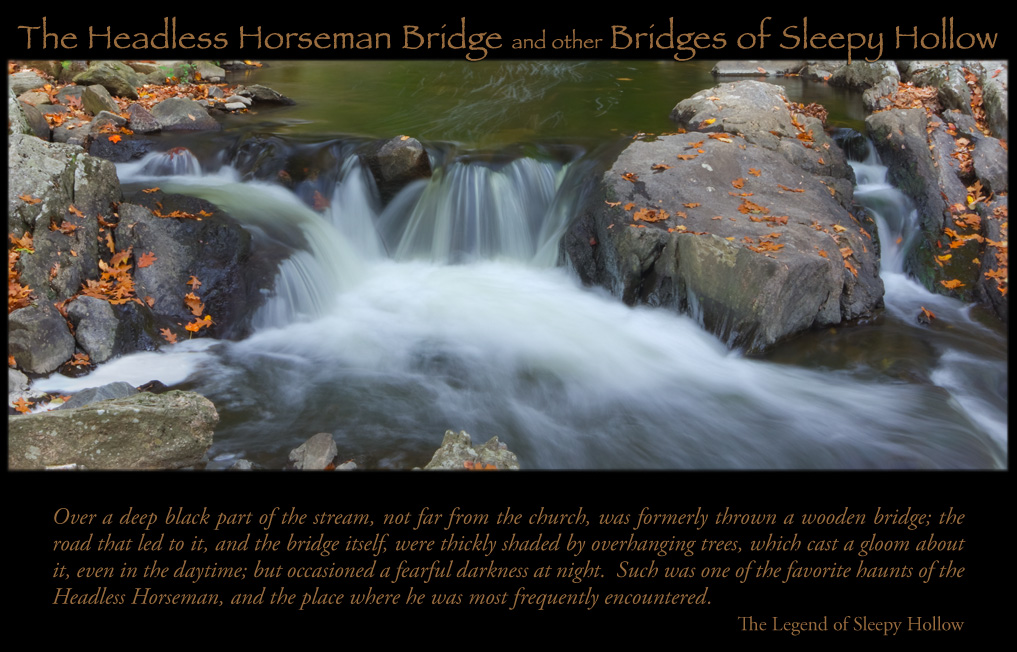

In myth and legend, bridges are immensely symbolic objects, representing important passages from one "shore" to another - from youth to adulthood, perhaps. Or even from life to death - or vice versa. In "The Legend of Sleepy Hollow," the local tales surrounding the activity of the Headless Horseman seem to imply that the crossing of this bridge carries him from the land of the dead to that of the living - and back again - as he departs the burial ground of the Old Dutch Church, and returns each morning before sunrise. At the high point of Irving's Legend, Ichabod Crane, while fleeing from the Horseman, rides for the bridge in the hope of crossing a magic line of safety, a point where the Horseman's powers dissolve:
An opening in the trees now cheered him with the hopes that the church bridge was at hand. The wavering reflection of a silver star in the bosom of the brook told him that he was not mistaken. ..."If I can but reach that bridge," thought Ichabod, "I am safe." ...he thundered over the resounding planks; he gained the opposite side; and now Ichabod cast a look behind to see if his pursuer should vanish, according to rule, in a flash of fire and brimstone.
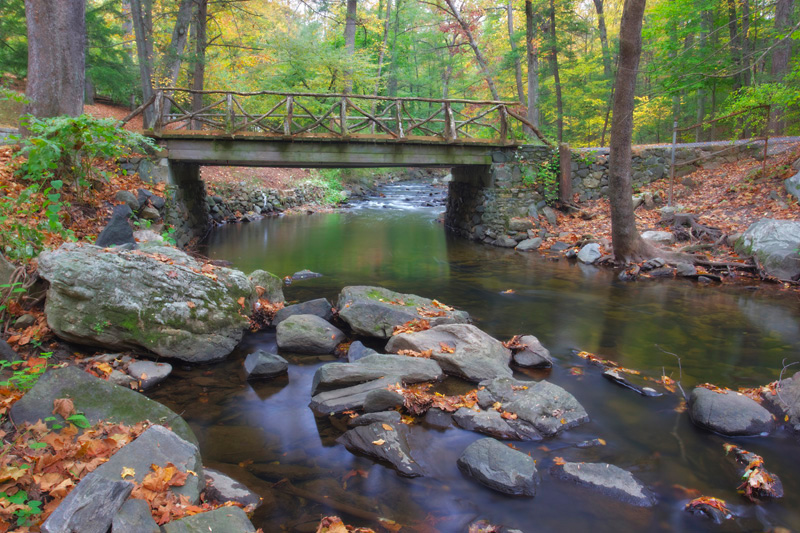
The Headless Horseman Bridge described by Irving was a real feature that was once found in Sleepy Hollow, although the original wooden structure has long since rotted away and been succeeded by several replacements, including a modern bridge that accommodates motorized traffic. But the bridge seen in the photos above and below serves as a plausible replica - located on the property of Sleepy Hollow Cemetery, it crosses the Pocantico River about a half-mile upstream from the site of its legendary predecessor.
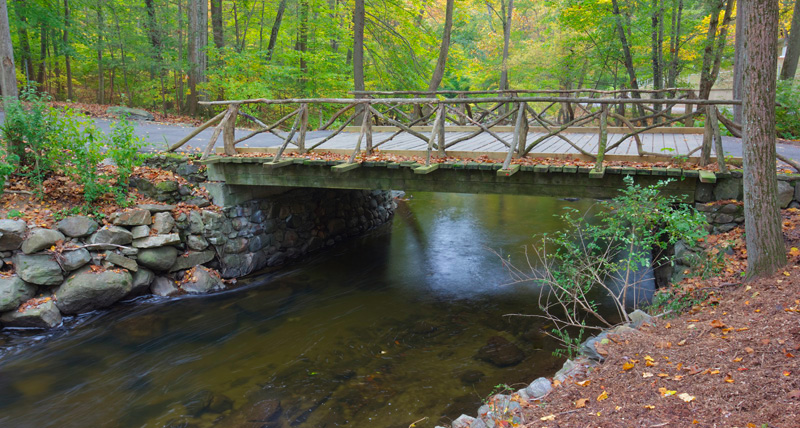
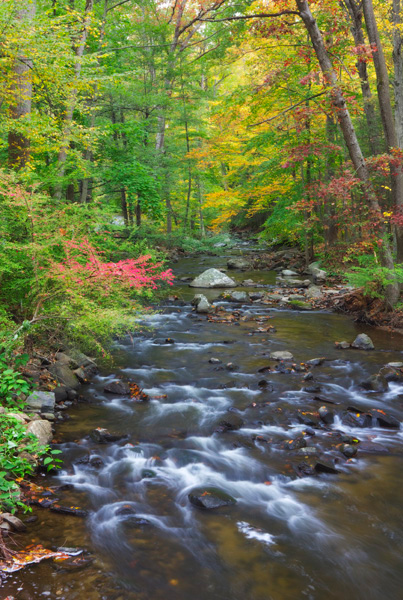
The scenic Pocantico River, as seen from the Headless Horseman Bridge (above), and from a short distance downstream (below, with the bridge partially visible in the background). The name Pocantico (pronounced po-CAN-tih-ko) is of Native American origin.
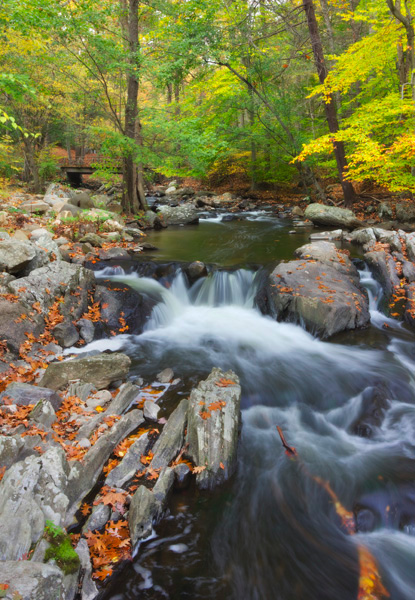
The exact appearance of the original bridge that Irving knew in the 1790's is a bit of a mystery, however. His text describes it simply as "a wooden bridge," without additional detail, and there are no drawings or photographs of it. It was presumably a very modest structure, in contrast to the more romantic, covered bridges that have become accepted elements of the story through later adaptations, most notably the 1949 Disney cartoon (left) and Tim Burton's 1999 film (right), both seen below:
Over the past two centuries, at least five different bridges have serviced the Albany Post Road (now Broadway, or Route 9) at or near the site of the old bridge in Irving's story. The oldest available photograph of the site (below) is undated, but represents a bridge that is known to have existed here between 1840 and 1872. This was not the bridge from the Legend, but was probably very similar to it in most respects:
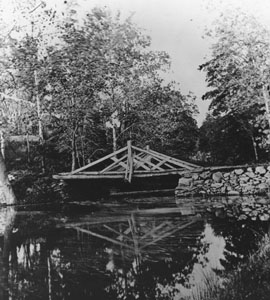
The exact position of the bridge has changed over time, because of alterations to the route of the Albany Post Road. This had already occurred once at the time of Irving's writing of the Legend in 1820, in which the change is mentioned:
The bridge became more than ever an object of superstitious awe; and that may be the reason why the road has been altered of late years, so as to approach the church by the border of the mill-pond.
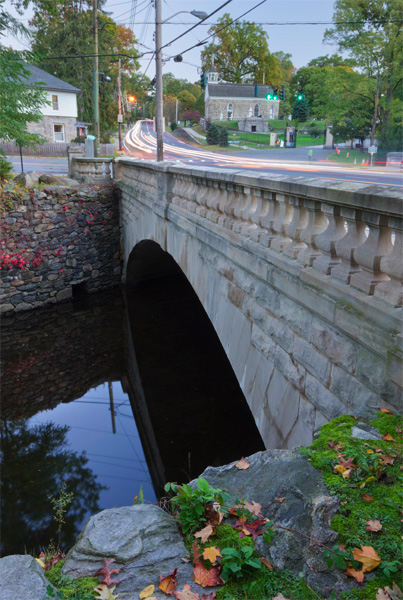
The modern bridge spans the river at a spot some distance downstream from the old bridge of the legend. Nevertheless, a state historical sign near the contemporary bridge would lead you to think that the older one had been found right here, "at this spot." That's technically inaccurate, but it's close enough for government work:
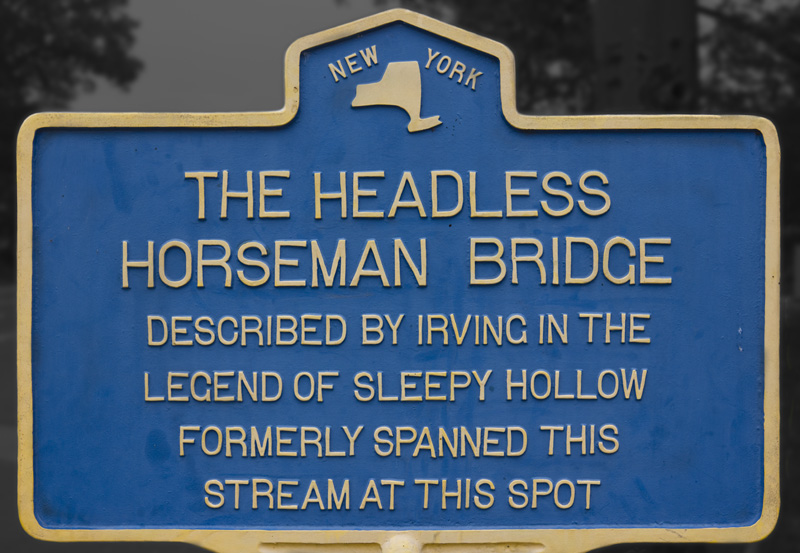
This plaque in honor of Irving can be found on the modern bridge:
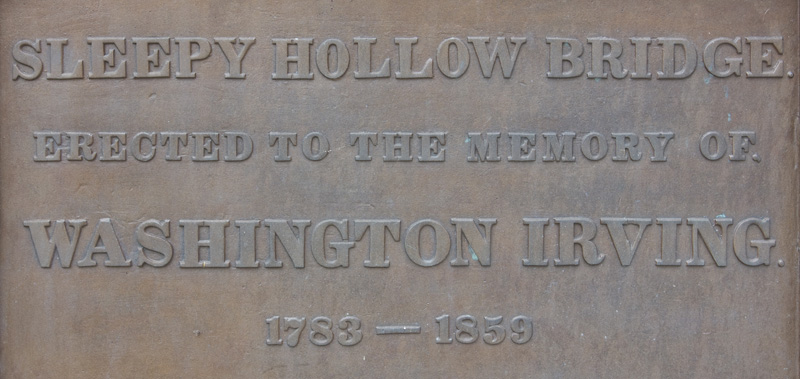
Other noteworthy bridges can be found throughout Sleepy Hollow, all dating to the early 20th Century. Three decorative stone bridges were constructed by the Rockefeller Family to accommodate the many carriage roads that they established on their enormous estate called Pocantico Hills. Much of the property is now a state park called the Rockefeller State Park Preserve, where the bridges can be found crossing the Pocantico in various places. Although they lack the legendary significance of the Headless Horseman Bridge, they're aesthetically beautiful. The remainder of the photos on this page depict two of the three bridges (I failed to capture satisfying photos of the third example, due to debris that had piled up around the base of that bridge during the severe flooding of September 2011).
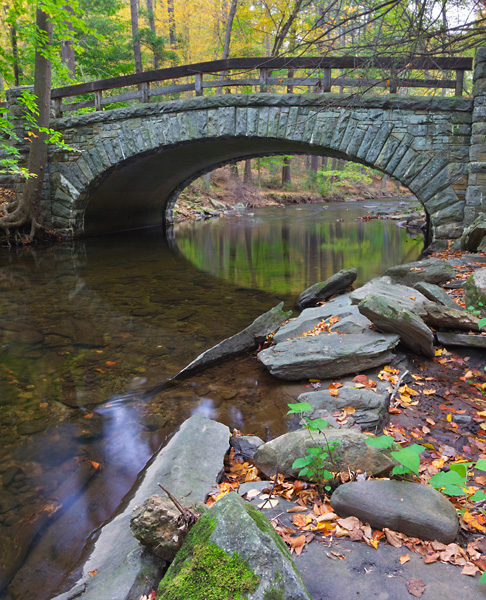
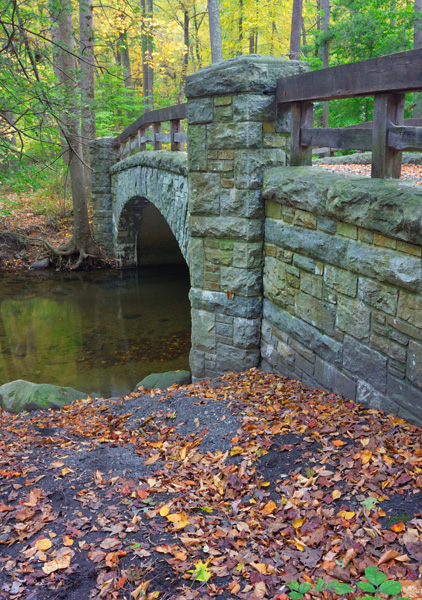
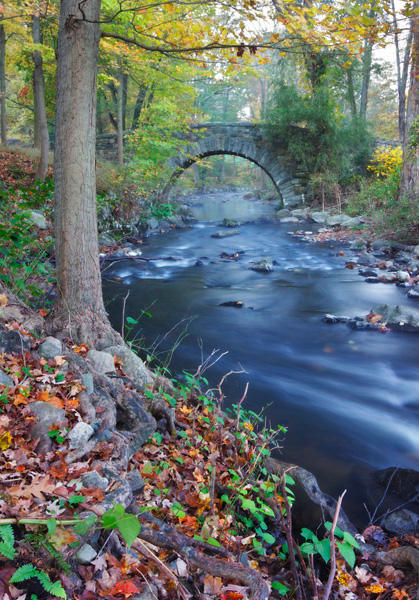
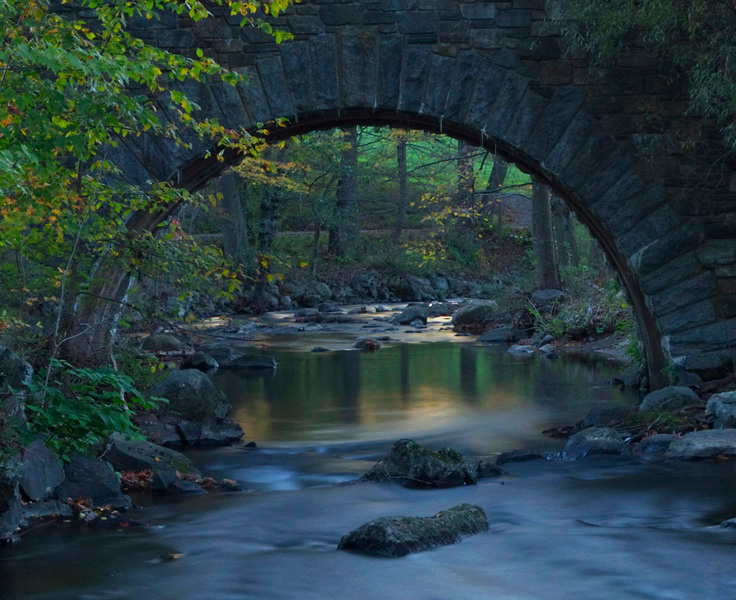
On to Sleepy Hollow Cemetery...
or